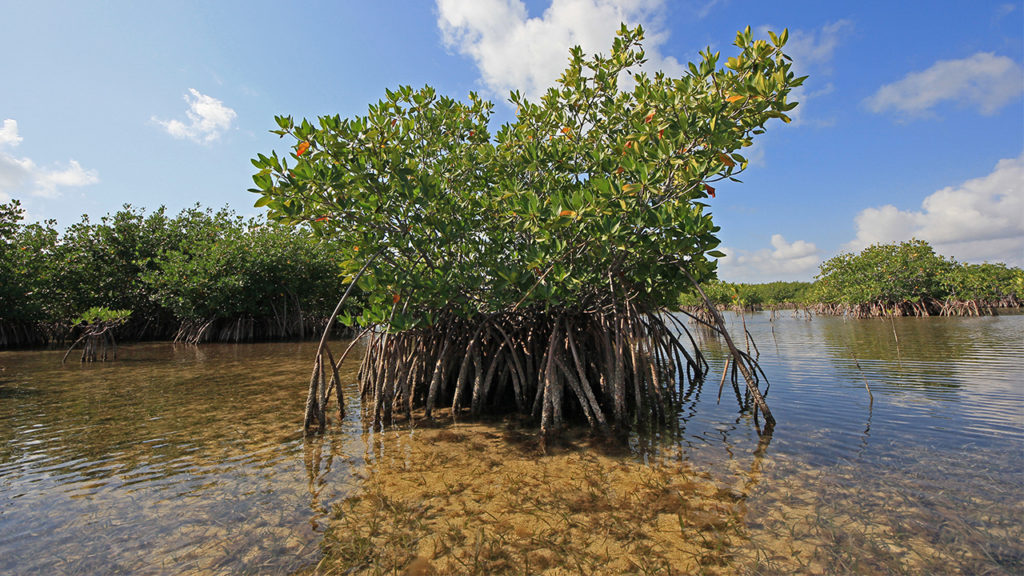Dying Bay: Seagrass Task Force Meets Today
Rumya SundaramJune 17, 2019

In this undated image, Red Mangoves and Turtle Grass are seen beds on the flats of Biscayne National Park, Florida. (Adobe)
After Miami officials were shocked by a February report that showed up to 93 percent of Biscayne Bay’s seagrass is dead in spots, a new task force aimed at finding solutions is set to hold its first meeting Monday.
Miami-Dade County’s environmental chief, Lee Hefty, and Chief Resilience Officer Jim Murley are on the nine-member task force, which also has a mix of engineers, scientists, a developer and a tourism official.
Lisa Spadafina, the head of the County’s Natural Resources Division, said environmental managers are starting with getting more data.
“We have also ramped up monitoring of benthic areas, with 20 to 40 new monitoring stations in Julia Tuttle alone. Monitoring will include soft and hard coral, macro algae, sponges and seagrasses,” she said.
She said the County will use a new computer application to get a better idea of how freshwater and saltwater mix so officials can understand the poor water quality conditions believed to have caused the massive seagrass die-off.
Another plan, already in place, could also help improve freshwater flow into the bay. The Biscayne Bay Coastal Wetlands Project focuses on restoring some of the historic sheetflow of freshwater into the bay, avoiding some of the channelized flow that has been created by Miami’s many canals. This should not only increase the amount of freshwater flowing into the bay to counter the growing saline environment, but also reduce the amount of nutrients entering the bay through channels and canals that bypass natural filtration.
“The most important considerations of remediation are quality and quantity,” said Kelly Cox, the general counsel at Miami Waterkeeper, an environmental advocacy and research group.
While fixing some of the historic freshwater flow will help the situation, addressing the causes of nutrients, such as sewage and septic leaks, fertilizer are also important. The County is currently under a federal consent order to repair and replace aging sewage lines. That, along with population growth and the rainy season, is expected to cause recurring problems like overflows in the future, Cox said.
Reinforcing or fortifying the sewer lines and switching from septic to sewer may help some of these issues, she said.
Cox said other suggestions from a National Oceanic and Atmospheric Administration Habitat Blueprint include “blackout periods” for fertilizer during the summer, when plant growth is already sustained by the rainy season and fertilizer is generally unnecessary.
Other ideas include banning fertilizer within 15 feet of a waterway in order to prevent fertilizers from entering the channels that flow into Biscayne Bay. This could help reduce the amount of nutrients entering the bay.
“The seagrass die-off could be considered a canary in the coal mine,” according to Cox. “This might indicate more serious problems in the ecosystem that affect more species of plants and animals that are important to the health of the environment and the local economy.”


